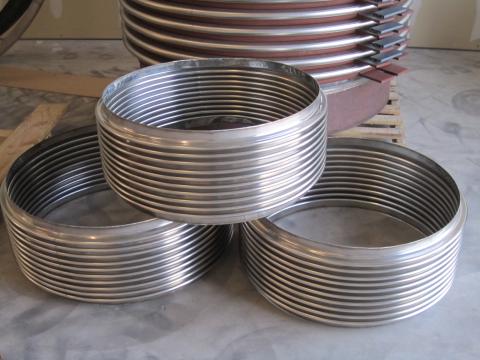Composite Metal Ducting
Composite metal ducting expansion joints are flexible connectors designed to accommodate movement, vibration, and thermal expansion in metal ducting systems. These joints combine the benefits of composite materials and metal to provide enhanced flexibility, strength, and durability for applications involving the transfer of gases, particulates, or fluids under varying pressure and temperature conditions. This combination makes them suitable for challenging environments where traditional materials may not perform effectively.
Key features of composite metal ducting expansion joints include versatile construction, durability, flexibility, customizability, suitability for various applications, enhanced system reliability, prolonged operational lifespan, temperature and pressure resistance, reduced vibration and noise, and cost-effectiveness. It has a broad range of applications including HVAC systems, exhaust systems, power plants, industrial ductwork, chemical processing, and pneumatic conveying. They are particularly useful in in environments where ducting systems are subject to temperature changes, chemical exposure, and dynamic movements.
The structure of composite metal ducting expansion joints includes several key components. The bellows, the core component, are typically made from layers of metal such as stainless steel combined with non-metallic materials like PTFE or elastomers. This combination enhances flexibility and durability while providing resistance to corrosion and chemical exposure. End connections are equipped with various types, such as flanges, weld ends, or threaded ends, allowing the joints to be securely attached to the ducting system. Some composite metal ducting expansion joints also include additional reinforcements like wire mesh or fabric layers to improve strength and resistance to pressure.
These joints are constructed from a combination of metals such as stainless steel and nickel alloys, and non-metallic materials, including PTFE, elastomers, and high-performance fabrics. The specific materials are chosen based on the requirements of the application and the conditions of the operating environment. Their design features composite construction which combines the flexibility of non-metallic materials with the strength and durability of metals, resulting in a joint that can handle a wide range of movements and environmental conditions. Additionally, it features a multi-layered design that typically includes multiple layers of different materials to optimize performance, incorporating an inner metal layer for strength and an outer non-metallic layer for flexibility and corrosion resistance.
In the selection and maintenance of rubber ducting expansion joints, we consider three primary factors to be of high importance: material compatibility, movement requirements, and regular inspection and maintenance. It is essential to account for variables such as temperature range, chemical exposure, and pressure demands. Therefore, choosing materials that are compatible with the media being conveyed and the operating environment is crucial. Additionally, it is vital to opt for expansion joints that are engineered to accommodate the specific types and degrees of movement within the ducting system, ensuring they can handle axial, lateral, and angular movements as necessary. Regular inspections are also imperative to identify any signs of wear, damage, or deterioration, and to replace expansion joints promptly to preserve system efficiency and safety.
Composite metal ducting expansion joints are essential for maintaining the functionality and durability of ducting systems, offering a balanced combination of flexibility, strength, and resistance to a variety of environmental conditions.

